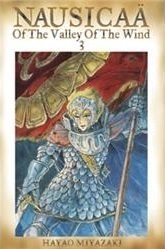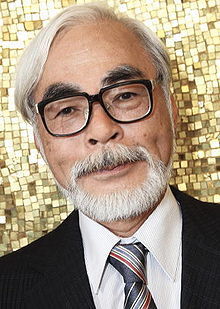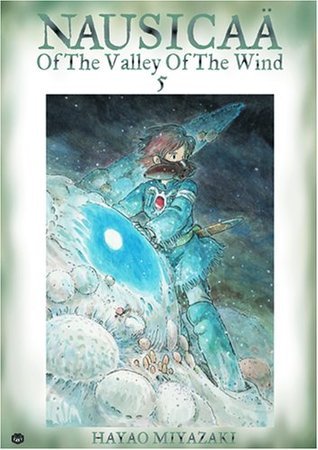
Part of Series
An epic fantasy tale written and illustrated by the legendary director Hayao Miyazaki! In a long-ago war, humankind set off a devastating ecological disaster. Thriving indistrial societies disappeared. The earth is slowly submerging beneath the expanding Sea of Corruption, an enormous toxic forest that creates mutant insects and releases a miasma of poisonous spores into the air.At the periphery of the sea, tiny kingdoms are scattered on tiny parcels of land. Here lies the Valley of the Wind, a kingdom of barely 500 citizens; a nation given fragile protection from the decaying sea's poisons by the ocean breezes; and home to Nausicaä. Nausicaä finds herself on the edge of despair as she comes to realize the full extent of the ecological destruction that's ravaging Earth. Meanwhile, Queen Kushana of Torumekia plots to lead her troops back to the imperial capital and seize the crown. Nausicaä agrees to join Kushana and her people in the fight against the Doroks and her scheming brothers.
Author

宮崎 駿 Hayao Miyazaki was born in Tokyo on January 5, 1941. He started his career in 1963 as an animator at the studio Toei Douga, and was subsequently involved in many early classics of Japanese animation. From the beginning, he commanded attention with his incredible ability to draw, and the seemingly-endless stream of movie ideas he proposed. In 1971, he moved to A Pro with Isao Takahata, then to Nippon Animation in 1973, where he was heavily involved in the World Masterpiece Theater TV animation series for the next five years. In 1978, he directed his first TV series, Conan, The Boy in Future, then moved to Tokyo Movie Shinsha in 1979 to direct his first movie, the classic Lupin III: The Castle of Cagliostro. In 1984, he released Nausicaä of the Valley of Wind, based on the manga (comic) of the same title which he had started two years before. The success of the film led to the establishment of a new animation studio, Studio Ghibli, at which Miyazaki has since written, directed, and produced many other films with Takahata. All of these films enjoyed critical and box office successes. In particular, Miyazaki's Princess Mononoke received the Japan Academy Award for Best Film and was the highest-grossing (about US$150 million) domestic film in Japan's history until it was taken over by another Miyazaki work, Spirited Away. In addition to animation, Miyazaki also draws manga. His major work was the Nausicaä of the Valley of Wind manga, an epic tale he worked on intermittently from 1982 to 1994 while he was busy making animated films. Another manga, Hikoutei Jidai, was later evolved into his film Porco Rosso.


